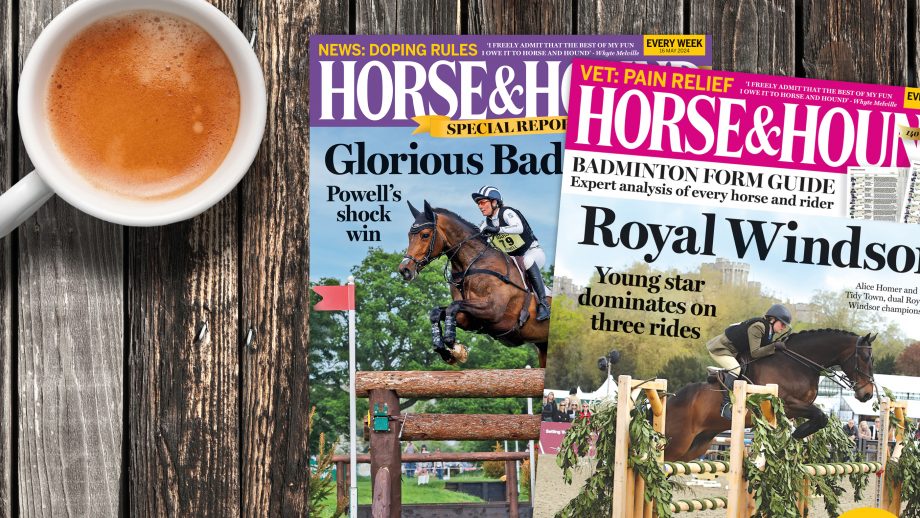Horses can present battle behaviours in each double bridles and snaffles throughout dressage exams – as new analysis backs up the necessity to give riders selection.
In a examine revealed in Animals, researchers from Aberystwyth College and the College of Portsmouth, seemed on the results of bridle kind – double versus snaffle – on equine behaviour at competitions. The researchers assessed 135 exams, filmed at two British Dressage (BD) competitions, from elementary to intermediate I degree. Of the 135 exams, 70 have been ridden in doubles and 65 in snaffles.
An ethogram was used to evaluate the horses’ behaviour all through the exams; on common horses spent 27.4% of the check displaying battle state behaviours – and there was mouth opening in all exams. Tail swishing was seen in 86.7% of horses, on common each eight seconds, 69.6% tossed their heads and 50.4% have been seen lip smacking.
The examine highlighted completely different behaviours between bridle kind: head tilting and tossing, tripping and low ranges of tail swishing have been comparable throughout competitors ranges for the double bridle – however elevated with competitors degree in snaffles. Mouth opening and tongue and jaw publicity have been larger at decrease competitors ranges for double bridles, however elevated at larger competitors ranges for the snaffle and double. The researchers stated the outcomes confirmed ”multi-faceted interplay between bridle kind, inferred rider ability degree and using fashion”.
The researchers added that the “excessive prevalence of battle behaviours at dressage competitions reported right here and in different research raises potential welfare considerations”.
“It significantly raises the query of why, when this has beforehand been effectively documented by the scientific group and relayed to the governing physique of the game, these excessive ranges of stress-related behaviours are nonetheless being noticed throughout all ranges of dressage competitors,” they stated.
Lead creator Rifka Faithfull instructed H&H this work supplies data on what is occurring within the check surroundings – and at dwelling.
“It provides us an thought of what’s occurring within the coaching of the horse, as a result of the check is a snapshot of that second in time, but additionally a mirrored image of the horse’s expertise exterior the check,” she stated.
Ms Faithfull added that the best way the battle behaviours have been recorded within the examine, by recording behaviour “transient occasions” and “steady states” – or each, meant larger volumes of behaviours have been recorded than some strategies utilized by different researchers.
“However we really feel it’s extra consultant of the particular quantity of behaviours occurring. It’s not simply whether or not or not a behaviour is occurring, it’s a measure of how a lot it’s occurring,” she stated.
“The important thing takeaway is the complicated interplay between the completely different parts – there’s no clear-cut ‘one bridle kind is kind of associated to adverse welfare than the opposite’.”
This backs up a examine by Russell MacKechnie-Guire and Rachel Murray that discovered double bridles aren’t a difficulty in themselves – however schooling on their use was key to persevering with to enhance equine welfare (information, 1 Could)
Co-author Sebastian McBride added: “There are good and dangerous methods to journey with a double bridle. Plenty of that appears to come back right down to rider skill, in using and data concerning the tack they’re utilizing and its influence on the horse.
“Giving individuals the choice to journey with the bridle they’re most educated with will hopefully result in individuals utilizing the suitable tack for them. That may be horse dependent; some get on higher with a snaffle and a few with a double, and once more that perhaps displays plenty of their coaching expertise.”
Double bridles are non-obligatory in nationwide competitions and BD chief govt Jason Brautigam instructed H&H: “We welcome all scientific analysis that goals to advance our collective understanding on these vitally vital subjects, however as this examine notes these are complicated points, and the outcomes will be open to interpretation. There are numerous elements that contribute to how a horse reacts in a contest surroundings, so it’s vital that we don’t equate all of those completely different noticed actions as ‘battle behaviours’ when their responses might differ in every case.
“We’re working carefully with specialists from throughout the equestrian group to construct a greater consensus on all horse welfare issues, from equine ethnography to tack and gear, and we stay totally dedicated to upholding the best requirements of horse care and well-being in our sport.”
The FEI instructed H&H it has not had the chance to overview the paper, however will probably be mentioned with the veterinary committee in September and “delivered to the eye of the teams concerned within the FEI equine welfare motion plan”.
“The FEI welcomes all new analysis that may contribute to the continual enchancment of horse welfare requirements, which stays a prime precedence for our organisation,” he stated.
You may additionally be all for:
Credit score: Emma Herrod


Credit score: Emma Herrod Pictures

Credit score: Future









